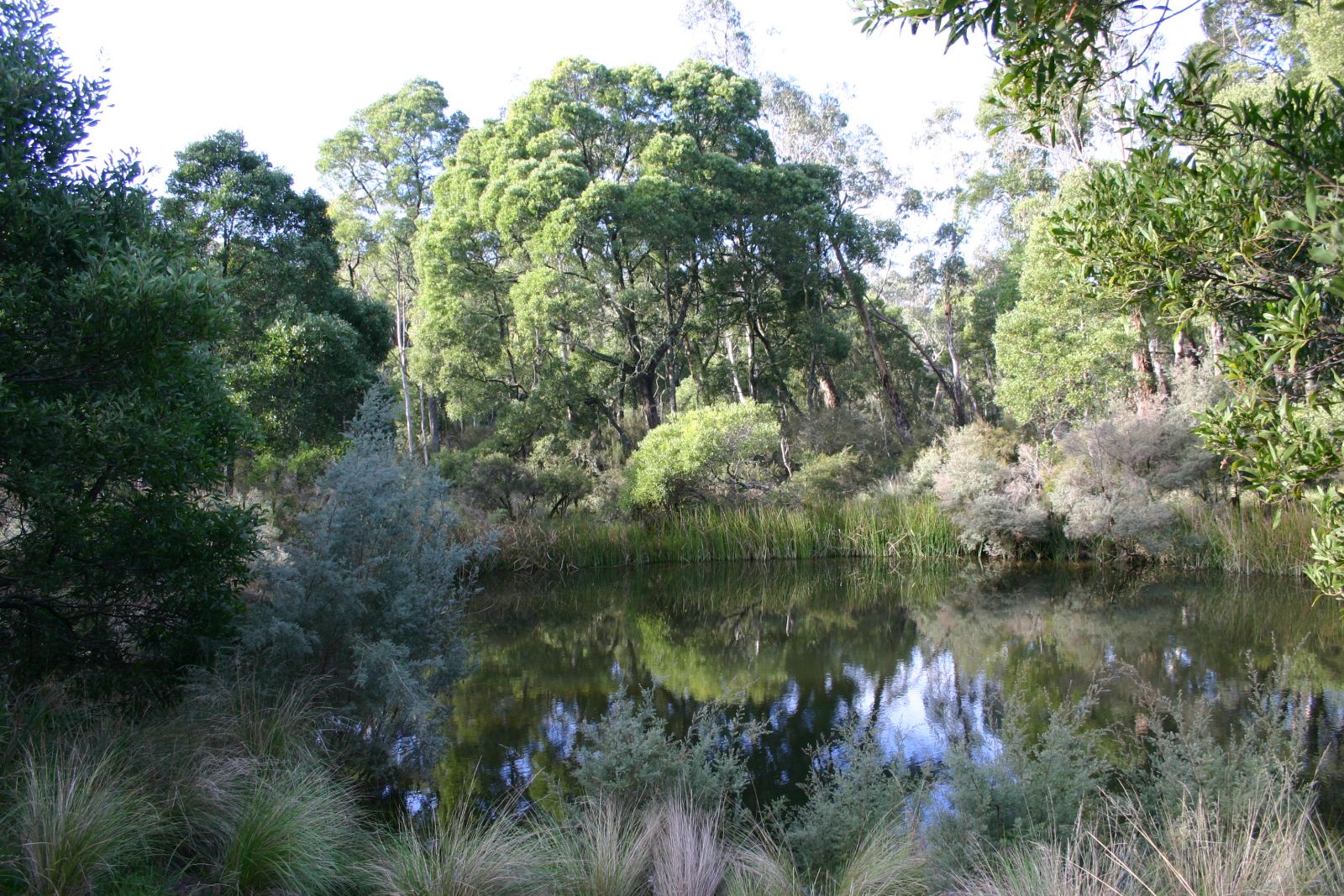Azure Kingfisher
Azure KingfisherAlcedo azurea | |
|---|---|
| Kingdom: | Animalia |
| Phylum: | Chordata |
| Class: | Aves |
| Order: | Coraciiformes |
| Family: | Alcedinidae |
| Status | |
| World: | least concern (IUCN Red List) |
| Australia: | least concern |
| Victoria: | not threatened (FFG Threatened list 2024) |
| FFG: | not listed |
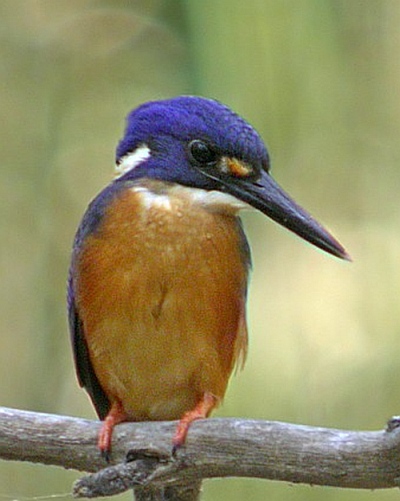
The Azure Kingfisher (Alcedo azurea) is a small kingfisher which is distinguished from other kingfishers by its distinctive blue upperparts, orange-rufous underside, very short tail feathers, long black bill and whitish marks either side of its neck.
Males and females have similar plumage and juveniles tend to have duller colouration.
Distribution
The Azure Kingfisher is found in association with aquatic habitats in northern, eastern and south-eastern Australia.
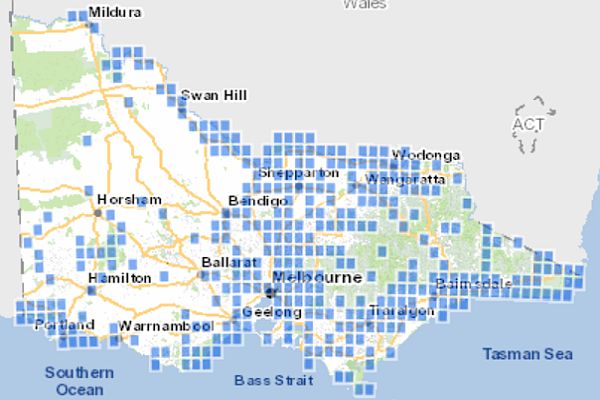
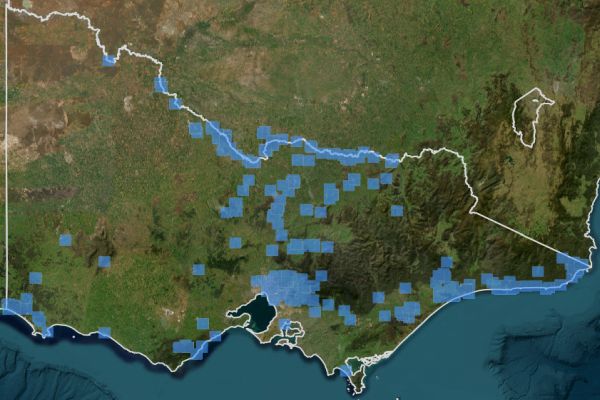
Ecology & Habitat
The Azure Kingfisher is usually found in association with aquatic habitats such as well vegetated streams where waters are slow flowing. They also inhabit billabongs, lakes, swamps, lagoons and dams. They are usually found in shady and often overhanging vegetation.
Diet comprises small fish (galaxias), crustaceans and aquatic insects, occasionally amphibians and aquatic invertebrates. They mostly catch prey by shallow plunging from overhanging perches but may also hover whilst locating prey.
Breeding is usually from spring through to summer, nesting in burrows excavated in banks of creeks streams or rivers, or at the edge of other wetlands such as dams or billabongs. They can nest up to several hundred metres from a watercourse. The clutch size is usually 5 or 6 eggs and both sexes share the incubation of the eggs (Higgins 1999).
The Azure Kingfisher is not considered a migratory species although there may be some movement associated with breeding and dispersal of young (Blakers et al. 1984).
A well vegetated stream with sections of slow flowing water provides good habitat for the Azure Kingfisher.
Population Status
The conservation status of Azure Kingfisher was re-assessed from Near threatened in 2013 (DSE 2013) to not threatened in 2020 as part of the Conservation Status Assessment Project – Victoria (DELWP 2020). This species is not listed under the Flora and Fauna Guarantee Act 1988 - Threatened List - June 2024 (DEECA 2024).
The are about 350 records across Victoria, generally in association with major river systems. The IUCN Red List considers the overall population to be in decline (BirdLife International. 2025)
A close relative of the Azure Kingfisher Alcedo azurea diemenensis (Tasmanian sub-species) is considered Critically Endangered. (The Action Plan for Australian Birds 2000). This serves to demonstrate how sensitive the Azure Kingfisher could be to environmental change.
In Victoria, records demonstrate a decline in the range of Azure Kingfisher (see above maps).
Threats
Decline of Azure Kingfisher populations is likely due to a combination of factors including a reduction in prey species, deterioration of habitat for prey species and damage to riparian habitat.
Brown Trout
The decline of the Critically Endangered Tasmanian sub-species Alcedo azurea diemenensis is attributed to competition with Brown Trout Salmo trutta, which are now present in all streams and probably reduce the availability of galaxids and the other small fish which are presumed to be the kingfisher's natural prey (The Action Plan for Australian Birds 2000)
Brown Trout Salmo trutta, are widely dispersed in Victorian streams and most likely pose a similar threat to the Tasmanian sub-species by reducing the natural prey of the Azure Kingfisher in Victoria. Brown Trout are no longer stocked into Victoria's streams but many streams continue to hold large numbers of Brown Trout which have established self supporting populations.
Modified flows
Damaged in-stream and riparian zone
Stock grazing along riparian zones could contribute to decline of Azure Kingfisher habitat as the vegetation structure is altered (Martin & Possingham, 2005). Stock could also trample or disturb nests burrowed into the river bank.
The clearing of snags and trees over hanging waterways reduces the availability of perches and foraging opportunities.
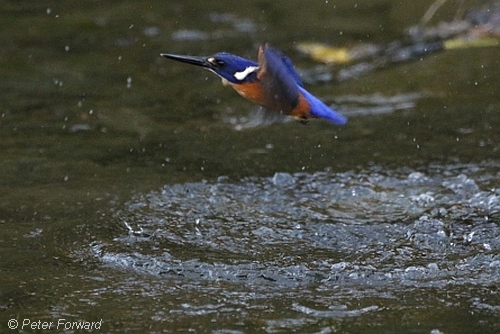
Conservation & Management
Protect known Azure Kingfisher habitat, particularly water quality and riparian zones.
Undertake surveys along Victorian waterways to determine more accurately the population of the Azure Kingfisher.
Continued monitoring to ensure the population is stable or increasing over an extended period.
Characterize streams occupied and unoccupied by Azures to determine preferred habitat including water quality and prey availability.
Raise community awareness regarding the conservation of the Azure Kingfisher and the need to act before species is threatened or endangered.
Focal species
Birds are often seen as biodiversity indicators, particularly those with specific habitat requirements (Canterbury et al. 2000). In Victoria the Azure Kingfisher could be a focal species given an holistic approach to managing its habitat requirements would benefit many in-stream and riparian species of flora and fauna.
References & links
Blakers M, Davies S. J, Davies J. F & Reilly P N, (1984), The atlas of Australian birds, Melbourne University Press, Carlton, Vic.
Canterbury G. E., Martin T.E., Petit D.R., Petit L.J. & Bradford D.F. (2000) Bird communities and habitat as ecological indicators of forest condition in regional monitoring, Conservation biology, 14 (2), 544-558
DEECA (2025) Flora and Fauna Guarantee Act 1988 - Threatened List - June 2024, Department of Energy, Environment and Climate Action, Victoria.
DELWP (2013) Advisory List of Threatened Vertebrate Fauna in Victoria – 2013, Department of Environment, Land, Water and Planning, East Melbourne, Victoria.
DELWP (2022) Flora and Fauna Guarantee Act 1988 - Threatened List - June 2022, Department of Environment Land Water and Planning, Victoria.
Higgins P. J., et al. (1999) Handbook of Australian, New Zealand & Antarctic birds, volume 4 parrots to dollarbirds, Oxford University Press, South Melbourne, Vi
IUCN Red List (2025) BirdLife International. 2024. Ceyx azureus. The IUCN Red List of Threatened Species 2024: e.T22683045A263620120. https://dx.doi.org/10.2305/IUCN.UK.2024-2.RLTS.T22683045A263620120.en. Accessed on 19 February 2025.
Martin TG & Possingham HP, (2005), Predicting the impact of livestock grazing on birds using foraging height data, Journal of applied ecology, 42, 400-408
Nilsson C & Berggren K, (2000), Alterations of riparian ecosystems caused by river regulation, Bioscience, 50 (9), 783-792
VBA (2025) Victorian Biodiversity Atlas, Department of Energy, Environment and Climate Action, Victoria (DEECA).
VVB (2025) Visualising Victoria's Biodiversity map portal.
Please contribute information regarding Azure Kingfisher in Victoria - observations, images or projects. Contact SWIFFT


